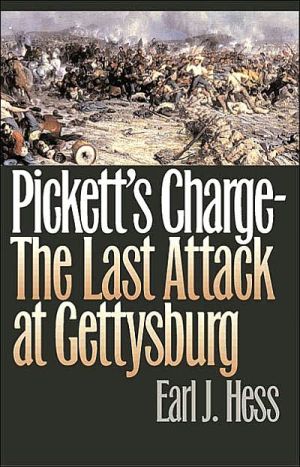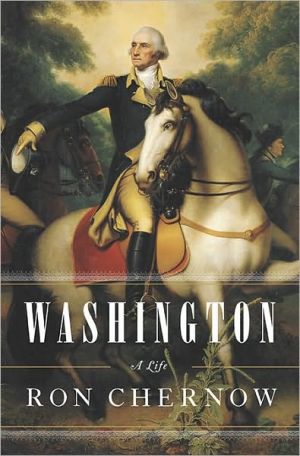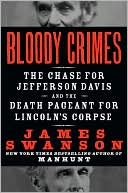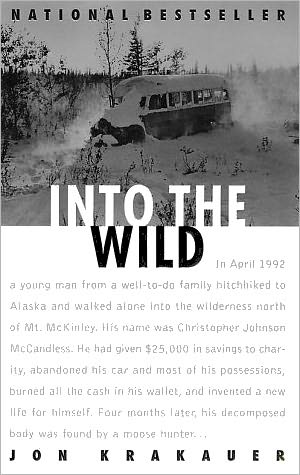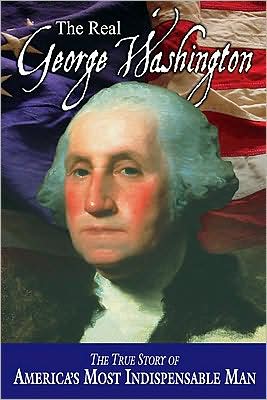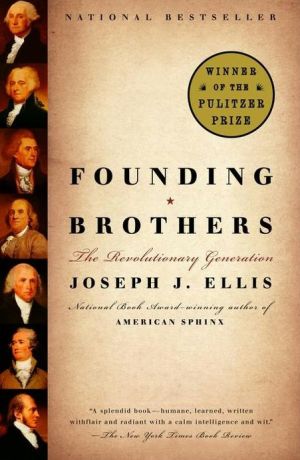Pickett's Charge: The Last Attack at Gettysburg
Pickett's Charge is probably the best-known military engagement of the Civil War, widely regarded as the defining moment of the battle of Gettysburg and celebrated as the high-water mark of the Confederacy. But as Earl Hess notes, the epic stature of Pickett's Charge has grown at the expense of reality, and the facts of the attack have been obscured or distorted by the legend that surrounds them.\ With this book, Hess sweeps away the accumulated myths about Pickett's Charge to provide the...
Search in google:
Pickett's Charge is probably the best-known military engagement of the Civil War, widely regarded as the defining moment of the battle of Gettysburg and celebrated as the high-water mark of the Confederacy. But as Earl Hess notes, the epic stature of Pickett's Charge has grown at the expense of reality, and the facts of the attack have been obscured or distorted by the legend that surrounds them. With this book, Hess sweeps away the accumulated myths about Pickett's Charge to provide the definitive history of the engagement. Drawing on exhaustive research, especially in unpublished personal accounts, he creates a moving narrative of the attack from both Union and Confederate perspectives, analyzing its planning, execution, aftermath, and legacy. He also examines the history of the units involved, their state of readiness, how they maneuvered under fire, and what the men who marched in the ranks thought about their participation in the assault. Ultimately, Hess explains, such an approach reveals Pickett's Charge both as a case study in how soldiers deal with combat and as a dramatic example of heroism, failure, and fate on the battlefield. D. Scott Hartwig I have no doubt that this work will take its place as the new standard on Pickett's Charge.
The Last Attack at Gettysburg\ Lt. Frank A. Haskell first became aware that Friday, July 3, had arrived when he felt someone pulling on his foot. It was four o'clock in the morning, nearly a half-hour before the sun would rise, and Haskell had managed to get four hours of sleep. If the sky had not been so cloudy, he could have looked up and seen the moon hovering above the sleeping army. The first sound Haskell detected in the dark was the popping of skirmish fire, off to the right front of the Second Corps line. After two days of terrific fighting at Gettysburg, the generals were still not satisfied. Another day of bloodshed was needed to decide a winner and perhaps to settle the fate of the nation.\ The man tugging at Haskell's boot was Brig. Gen. John Gibbon, commander of the Second Division of the Second Corps. The two had fallen asleep in the Bryan peach orchard atop Cemetery Ridge, just behind the division line. Haskell found a cup of hot coffee and hastily drank it while getting ready to mount his horse and ride with Gibbon to discover the progress of the skirmishing. The general and his staff officer rode slowly, for neither of them were fully awake. Haskell noticed that most of the division was still asleep on the ridge, even though the skirmishers were only a few hundred yards away. As he looked to the left front, over the battlefield of July 2, he saw wounded horses limping through the growing light of dawn. The "ravages of the conflict were still fearfully visible," Haskell wrote a few months later, "the scattered arms and the ground thickly dotted with the dead."\ There was little to fear from the skirmishers; they were simply firing in place rather than pushing or giving way. The skirmish lines remained stable, and only a few men now and then felt the sting of a round. There was time for Gibbon and Haskell to loll about and observe their men waking up with the sun. Soon the normal sounds and sights of a camp coming to life could be detected. "Then ensued the hum of an army . . . chatting in low tones, and running about and jostling among each other, rolling and packing their blankets and tents," wrote Haskell. "But one could not have told by the appearance of the men, that they were in battle yesterday, and were likely to be again to-day. They packed their knapsacks, boiled their coffee, and munched their hard bread, just as usual, . . . and their talk is far more concerning their present employment,—some joke or drollery,—than concerning what they saw or did yesterday."[1]\ These were veteran soldiers who knew that taking care of the inner man was the most important preparation for battle. As they readied for the day, the sun rose higher, but it was often obscured by dark clouds all morning. Old soldiers knew that it usually rained right after a major battle, and the fighting on July 1 and 2 had been among the heaviest of the war. But the moon set at 7:29 A.M., and the clouds continued to break apart. There would be no rain today.[2]\ To the right front of Gibbon's division a lone regiment was waking up from its bivouac along Emmitsburg Road. The men of the 8th Ohio had been on skirmish duty since the day before. Most of the regiment had slept along the ditch that bordered the west side of the pike while their regimental comrades manned the skirmish line, which was along a rail fence farther west. The skirmishers were only about sixty yards from the Confederate skirmish line, yet the bulk of the Ohio unit had no trouble waking up with the dawn, undisturbed by the racket taking place a short distance west of their ditch. Despite the heat of this early summer, the night of July 2 had been a bit chilly. The sun warmed everyone; it "sent its rays upon unprotected faces and into blinking eyes," wrote Lt. Thomas F. Galwey. The bluecoated soldiers rose with humped shoulders and outstretched limbs, "followed by a curious peering forward to see what the enemy, beginning to stir too, might be about."\ Back to the rear, along Cemetery Ridge, Galwey could hear "an angry neighing" from the battery horses. They were tired of carrying the harness "that for more than two days they had constantly worn." The men on the skirmish lines could hardly afford to protest their fate; they spent the first moments of this day quickly building small fires to heat coffee. Galwey looked about and saw "little whiffs of blue smoke" rising into the air from numerous campfires. The sporadic skirmishing that continued on various parts of the line could not prevent these "determined spirits" from restoring their strength and energy with a much-needed dose of caffeine.[3]\ Much the same scene was enacted on the opposite side of the field, separated from the Yankees by less than a mile of disputed ground. Col. Edward Porter Alexander was among the first to wake up, despite having spent part of the night tending to the placement of his guns. Alexander commanded an artillery battalion in Lt. Gen. James Longstreet's First Corps and had been given temporary charge of several other battalions in the vicious battle the day before. He had visited Longstreet's bivouac at midnight to receive instructions for the morrow and learned that the attack would be renewed. He was to select an advantageous spot for the Washington Artillery, not an easy task in the darkness. Yet the moon shone brightly at that midnight hour, and Alexander surveyed the battlefield, believing he saw a place for the guns that were to reach him at dawn.\ Alexander was satisfied and sought a place to sleep at 1:00 A.M. The Sherfy peach orchard was on some of the highest ground along Emmitsburg Road. It had been the scene of particularly hard fighting the evening before when Longstreet's men crushed the Union Third Corps. Now it was a mess, filled with "deep dust & blood, & filth of all kinds," recalled Alexander. The orchard was "trampled and wrecked." He found two fence rails and carefully placed them under a tree, used his saddle as a pillow, and fell asleep surrounded by human corpses and dead horses. He awoke two hours later after a "good sound & needed sleep," having slept no more than two hours the night before as well.\ While Gibbon and Haskell still lay and dreamed in their own peach orchard, Alexander began to putter around in the predawn darkness. He had only a dim knowledge of the Union position, but he could see, as the sun began to peek over the horizon, what he thought was the spot where Maj. Gen. Richard H. Anderson's division had attacked the evening before. He assumed this spot was high ground just in front of the Federal lines and that a Rebel line of battle would appear there once the sun was fully risen. Therefore he directed the Washington Artillery to string out in a line through the Sherfy peach orchard, aiming toward that spot. Only later, when the sun was rising, did he realize his mistake. The high ground was Cemetery Ridge, and it was still held by the Yankees. Alexander scrambled to move his guns, fearing that they would be fatally enfiladed by the Union artillery as soon as the enemy gunners woke up and realized what an advantage Alexander had handed them. "It scared me awfully," he confessed, but Alexander managed to readjust the line before any harm was done.
PrefaceChapter 1. The Last Attack at Gettysburg Chapter 2. The Attackers Chapter 3. The Defenders Chapter 4. The Bombardment Chapter 5. To Emmitsburg Road Chapter 6. To the Stone Fence Chapter 7. High Tide Chapter 8. The Repulse Chapter 9. Glory Enough Epilogue: Making Sense of Pickett's Charge Order of Battle Notes Bibliography Index
\ From the Publisher"This book is probably the best book on Pickett's Charge that has been written to date. . . . Hess's writing is clear and lucid, and very descriptive of the horrible battlefield conditions during this storied attack and repulse. . . . His book will stand on its own merit for a long time to come. It's a must-have title for any Gettysburg collection."\ -Journal of Military History\ "Hess brings an impressive outpouring of new and old sources to bear in a strong narrative of the attack and its repulse that is rich in detail, quotes and personal accounts, with excellent accompanying maps and photographs. . . . This is a good book."\ -Washington Post Book World\ "Hess provides a stirring battle narrative accompanied by new interpretations tracing the hows and whys of what has been called Pickett's Charge. . . . A successful combination of familiar and not so well known accounts. . . . Very readable with a liberal use of maps and illustrations to accompany the text. . . . A necessary read for anyone interested in the Gettysburg Campaign or military history. . . . The best account of that historic encounter on Cemetery Ridge."\ -Civil War News\ "Here we are told again and better of the best-known day of the war, in a beautifully written account. . . . No prior account captures with such integrity and historical accuracy the horror and valor of the best-known infantry assault of the war. This book imparts a palpable understanding and appreciation of the roles played by men of all ranks, both sides, the brave, the foolish, the cowardly, the opportunistic."\ -Virginia Quarterly Review\ "Well illustrated with scenes from the battlefield and portraits of the principal figures. . . . The writing is crisp and clear. Pickett's Charge is a valuable addition to the Civil War shelf."\ -Washington Times\ "Hess sweeps away the accumulated myths about Pickett's Charge to provide the definitive history of the engagement. . . . Drawing on exhaustive research, especially in unpublished personal accounts, he creates a moving narrative of the attack from both Union and Confederate perspectives, analyzing its planning, execution, aftermath, and legacy."\ -McCormick Messenger\ [Hess] utilizes a wide range of primary sources penned by the participants themselves from before the attack began through postwar remembrances. (Civil War Times)\ I have no doubt that this work will take its place as the new standard on Pickett's Charge. (D. Scott Hartwig, Historian, Gettysburg, Pennsylvania)\ \ \ \ \ \ Washington Post Book WorldHess brings an impressive outpouring of new and old sources to bear in a strong narrative of the attack and its repulse that is rich in detail, quotes and personal accounts, with excellent accompanying maps and photographs. . . .This is a good book.\ \ \ Civil War Times[Hess] utilizes a wide range of primary sources penned by the participants themselves from before the attack began through postwar remembrances.\ \ \ \ \ D. Scott HartwigI have no doubt that this work will take its place as the new standard on Pickett's Charge.\ \
